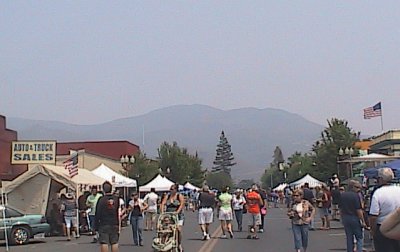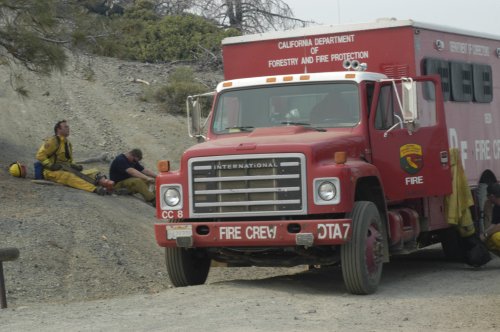- Elizabeth Larson
- Posted On
County skies begin to clear; Walker Fire reaches containment
The fire, which topped out at 14,500 acres, was contained Sunday morning, although it will be a few more days before it's out, according to Cal Fire.
A total of 303 fire personnel remained in the county to continue work on the blaze, about 14 miles east of Clearlake Oaks. Total cost of fighting the fire is estimated at $3.2 million.
The fire started June 22 when a vehicle's undercarriage struck a rock in the Benmore Canyon area, according to fire officials.
Fire activity was said to be minimal, with aggressive mop up in progress, Cal Fire reported. Its Incident Command Team No. 3 was transitioning the fire back to the Cal Fire Sonoma-Lake Napa Unit on Sunday.
A red flag warning has been issued for areas near the fire, Cal Fire reported. On Sunday Walker Ridge Road was to be reopened to the public.
The lightning-caused fires in the Mendocino National Forest were still being worked aggressively Sunday, having burned a total of 5,648 acres.
National forest officials reported the four-fire Soda Complex, at 4,150 acres, had reached an overall containment of 60 percent, with 343 firefighters working on putting out the blazes.
The complex's fires include the Big, 1,400 acres, 40-percent contained; the Back, 1,600 acres, 85-percent contained; the Mill, 400 acres, 0-percent contained; and Monkey Rock, 160 acres, 0-percent contained.
Pogie Point Campground at Lake Pillsbury remains closed to the public, as does Elk Mountain Road from the Bear Creek Road junction to Soda Creek. Lake Pillsbury can still be accessed via Potter
Valley.
The Yolla Bolly-Middle Eel Wilderness, the portion of the Yuki Wilderness Area located on the Mendocino National Forest, as well as all of the Sanhedrin Wilderness Area all are closed to public access until further notice.
Elsewhere around the North Coast, approximately 1,240 firefighters are working on Mendocino County's lightning fires, 60 of which continue to burn, Cal Fire reported Sunday.
The fires have burned 35,800 acres, according to Cal Fire, with 20-percent containment. Cost for firefighting efforts so far in Mendocino County are estimated at $7.9 million.
Air quality improves over the weekend
Lake County Air Pollution Control Officer Bob Reynolds reported Sunday that the county got a reprieve from heavy smoke from the wildfires over the weekend.
Thanks to a weather change, skies began to clear, according to Reynolds. He said southwest winds instead of the prevailing west to northwest winds are credited with the present improved air quality conditions.
Although some smoke still remains, Reynolds said the air was no longer exceeding health-based safety standards. By Sunday midday the visibility was nearing the state standard, he added.
In some other areas of Northern California – such as Butte, where fires still are actively burning – Reynolds said air quality standards have been exceeded by more than 800 percent.
The Mendocino Lightning Complex, northwest of Ukiah, remains the most likely to impact Lake County’s air, especially if prevailing transport winds return, Reynolds reported. He said those fires have been the primary source of smoke entering Lake County basin during last week.
A north wind also could transport smoke from the fires on the Mendocino Forest to the Clear Lake basin, he added.
Reynolds said residual haze and particulate in the air can be expected to continue until all the fires throughout Northern California are extinguished.
E-mail Elizabeth Larson at This email address is being protected from spambots. You need JavaScript enabled to view it..
{mos_sb_discuss:2}












